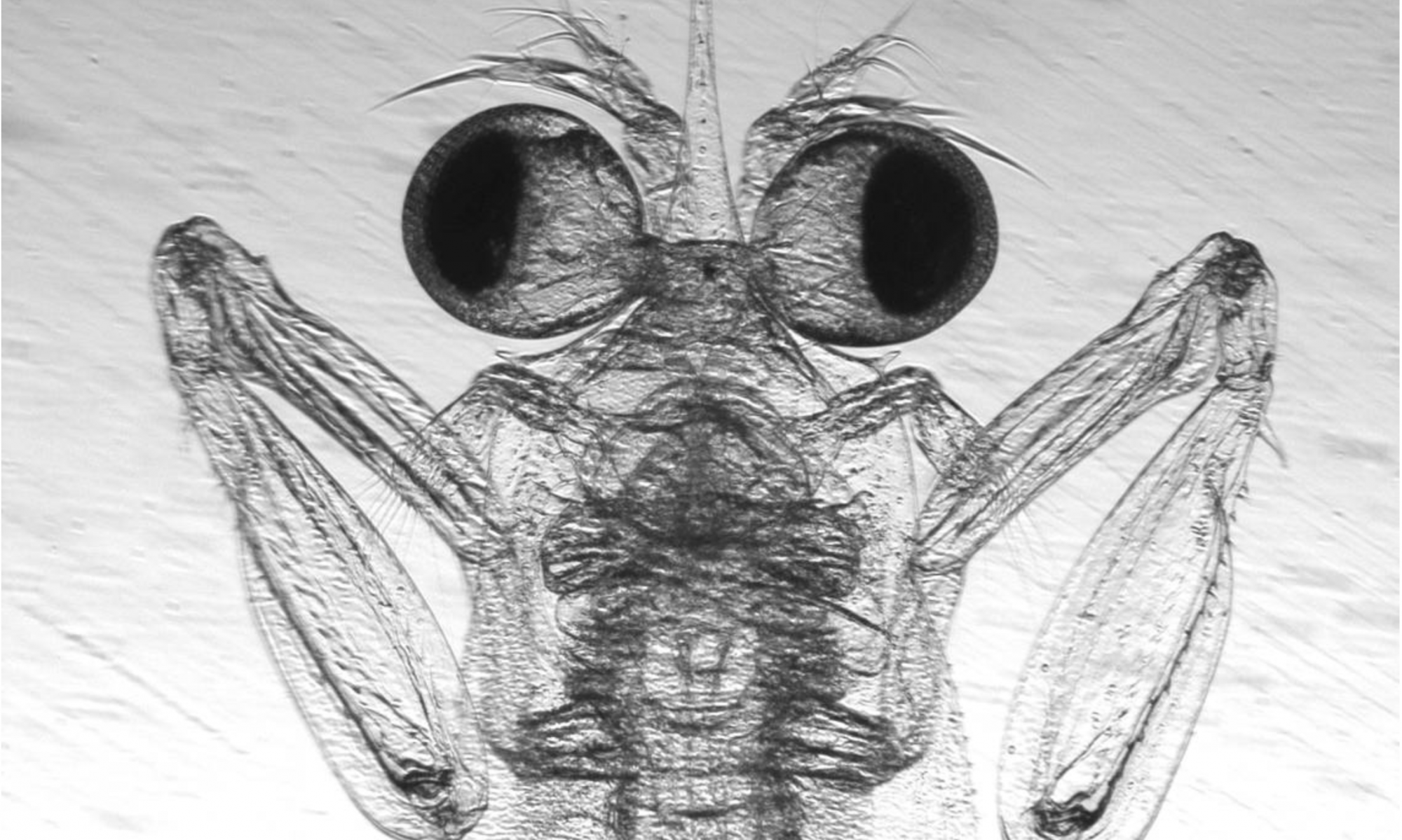What does the ocean sound like? Some imagine a serene, quiet place. In fact, it is quite the opposite: the ocean is a wild cacophony of pops, crackles, whistles and buzzes. The ocean is alive with sound. While the sounds of dolphins and whales have dominated our understanding of underwater communication, our lab focuses on a different realm – the crustacean denizens of the sea. From spiny lobsters to stomatopods, we probe the mechanisms that animals use to produce sound and the physical consequences of using these mechanisms in a liquid environment.
Acoustic communication in the ocean is an entirely different world than our more familiar terrestrial habitat. Sound travels approximately five times more quickly in water than in air, making it more difficult to localize. At the same time, sound is perhaps easier to sense in water, because there is a critical region around a vibrating source, called the “near-field”, in which the amplitude of the particle vibrations of the surrounding medium exceeds the amplitude of the pressure waves. Simply put, this means that it is possible to “feel” the vibrations with sensory hairs and body structures (which crustaceans possess) over a five-times greater distance for a given wavelength of sound in water than in air. While most acoustic communication in air occurs through pressure waves and pressure-sensitive ears, in water, vibrational communication can occur over distances of meters. Thus, one focal area of our research program is to understand how these physical features of the acoustic environment have influenced the evolutionary history and diversification of sound production in the sea.
Our current focus is on spiny lobsters (Palinuridae) and mantis shrimp (Stomatopoda). Our investigations of these systems integrate four areas – physiological measurements, field research, fossil reconstruction, and physics-based computer modeling – to illuminate their acoustic behavior and physiology in the context of their long evolutionary history. Much of our fieldwork has focused on the California mantis shrimp, Hemisquilla californiensis, and the California spiny lobster, Panulirus interruptus. Both species occur in the benthic habitat at Santa Catalina Island in California, where we use snorkeling and SCUBA diving to record their acoustic behavior and delve into the physics, biomechanics and evolution of acoustic communication in the ocean realm.
For our latest papers on this topic, check out our Google Scholar, Research Gate, or Orcid pages.
